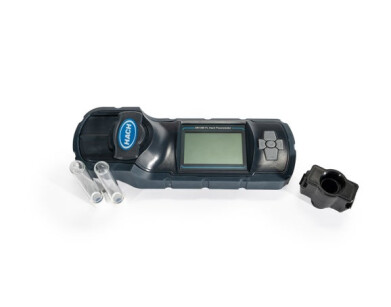Water/wastewater
New fluorometer and fluorescence detection methods enable critical ultra-low-range chlorine and sulphite measurements
Aug 02 2024
Hach recently introduced the new DR1300 FL portable fluorometer and three new detection test methods for free chlorine, total chlorine and sulphite. These are the first fluorescent chemical tests for chlorine to hit the market. The unique, patented fluorescent sulphite test achieves detection levels lower than sulphite tests currently on the market.
This launch marks a significant improvement on current colorimetric DPD-based methods. Hach’s fluorescence-based, non-DPD chemistries work using a different chemical reaction to detect chlorine. This facilitates considerably more sensitive tests with little or no interference from other oxidants. End users will also notice a decrease in toxic reagents and chemical waste because detector chemical addition is considerably reduced in comparison to conventional test methods.
These new tests come packaged in handy dropper bottles. The new Hach tests are straightforward for water professionals who manage and optimise dechlorination processes. This solution helps users avoid chlorine damage to RO membranes and other valuable assets with simple ultra-low-range testing in QA/QC labs and on-site.
Darren MacFarland, Hach’s Director of Global Chemistry commented, “Until now, ultra-low range laboratory residual chlorine measurements often have been inadequate, inefficient, or too difficult. We’re thrilled to bring simple and reliable fluorescence technology to market with the DR1300 FL solution to help our customers gain greater insights into critical parameters through accurate, ultra-low range measurements”.
The DR1300 FL portable fluorometer, manufactured by Pyxis®, and ULR Fluorescence tests offer vital part-per-billion (ppb) level chlorine and sulphite control with new fluorescence chemical formulas. The formulas target chlorine or sulphite to simplify the ULR testing procedure without compromising on sensitivity in the target measurement range. Chlorine can be detected from 2 parts per billion to 100 parts per billion and sulphite from 6-500 parts per billion. This high level of precision, along with new dependable technology and extended dechlorination monitoring parameters, means that end users can make better-informed dechlorination decisions with confidence.
“We’re exploring groundbreaking fluorescence technology and continuously creating new ways to help our customers create process efficiencies,” says Tim Ayer, Global Product Manager for Hach. “For example, our ULR CL17sc and DR1300 FL were developed to work together to maximise the benefit to our customers. When our customers use both solutions, they get the assurance of redundancy and verification, the convenience of online readings, and insightful data to make the most informed decisions.”
Digital Edition
IET 35.2 March
April 2025
Air Monitoring - Probe Sampling in Hazardous Areas Under Extreme Conditions - New, Game-Changing Sensor for Methane Emissions - Blue Sky Thinking: a 50-year Retrospective on Technological Prog...
View all digital editions
Events
Apr 30 2025 Ankara, Turkey
May 06 2025 Nuremberg, Germany
May 10 2025 Karachi, Pakistan
May 11 2025 Vienna, Austria
May 11 2025 Seoul, South Korea







_(4427399123)-(2).jpg)

.jpg)









